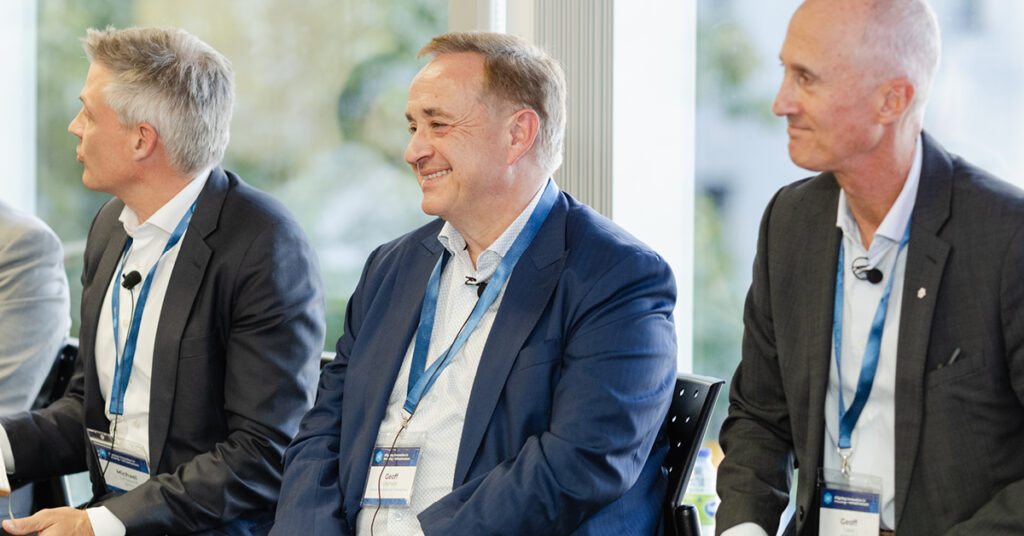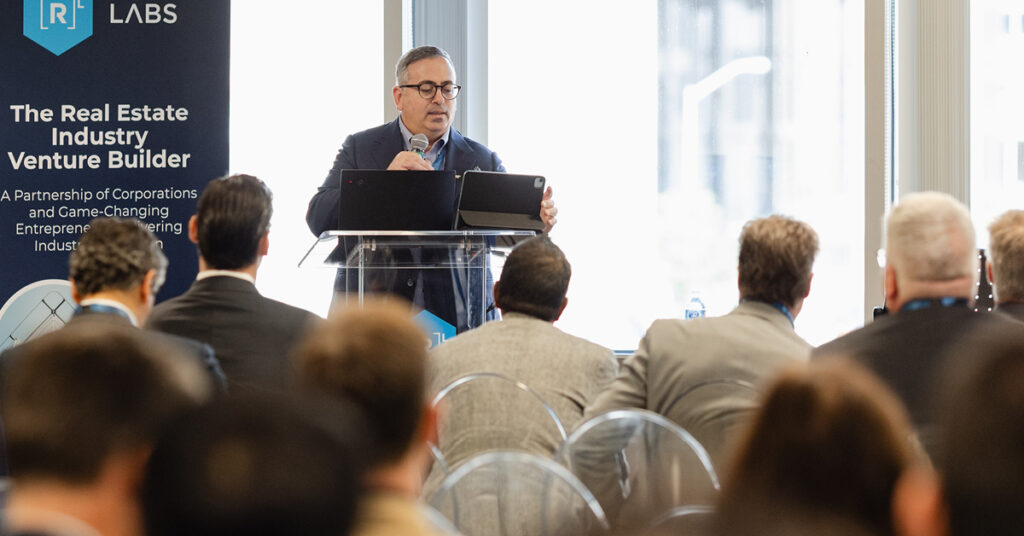On October 16, R-LABS hosted a dynamic panel discussion focusing on “Aligning Innovation in Housing + Infrastructure”, bringing together leaders from across the public and private sectors to explore how Canada can unlock new models of development, investment, and collaboration. Moderated by George Carras, Founder and CEO of R-LABS, the conversation reflected the urgency and opportunity facing the country.
During the opening remarks, Fred Cassano, Partner, National Real Estate Leader, PwC Canada, emphasized the importance of impact investing and modular construction as tools to unlock both public benefit and private outcomes. He highlighted the recent investment in Toronto’s Black Creek corridor as a model for how infrastructure and housing can align to deliver scalable solutions.
Meeting the Moment
George opened the panel with a compelling reminder: “Outcome equals event plus response.” The housing and infrastructure challenges Canada faces are real, but it is our response through innovation, collaboration, and ambition that will define the future.
The panel featured:
– Amar Singh, EVP at Infrastructure Ontario
– Frank Magliocco, National Leader for Private Clients at PwC Canada
– Geoff Grayhurst, CEO of Dorsay Development Corporation
– Geoff Cape, CEO of Assembly
– Michael Sutherland, Global Director at Hatch
Each brought a unique lens to the conversation, but a shared theme emerged: Canada’s systems are broken, and that is exactly why it is time to innovate.
Innovation Platforms and Policy Infrastructure
Frank Magliocco introduced the concept of Municipal Utility Districts (MUDs), a proven model from the United States that could help reduce development charges and spread infrastructure costs over time. “It is not a silver bullet,” he said, “but it is one bullet in the chamber.” The idea resonated across the panel, sparking discussion about how Canada can adapt global models to local realities.
Digitizing the Built Environment
Focusing on productivity, Amar Singh highlighted digitization as a leverage point. He argued that modernizing government contracts and data standards could unlock the information needed to drive efficiency across construction. “The industry sees government as both its biggest enabler and its biggest constraint,” he said. By enabling digital infrastructure, Canada could finally bend the productivity curve that has remained flat since 1948.
Michael Sutherland echoed this, pointing to global examples of focused development corporations and alternative infrastructure delivery models. He challenged Canada to embrace new entities that can pool capital and capabilities to deliver complex projects more efficiently.
Reinventing the Suburbs and Housing Models
The conversation then shifted to how Canada builds communities. Geoff Grayhurst described Veraine, an ambitious master-planned community in Pickering designed to house 75,000 people and create 15,000 jobs. With a half-billion-dollar infrastructure cost just to bring in basic services, he stressed the need for new funding and process models—citing global examples like Copenhagen’s stormwater parks and Paris’s cable-car transit as inspiration.
On the housing side, Geoff Cape emphasized modular construction and policy innovation. He called for rethinking procurement, insurance, and financing systems to support off-site construction and mid-rise density. “All over China, increasingly across Europe, this idea of modularized off-site construction works, and they make it look great,” he said.
Fractional ownership, tiny homes, and multi-generational housing were also discussed as ways to diversify housing forms and improve affordability. The consensus was clear: Canada must rethink not just how we build, but what we build and who we build for.

Mindset, Ambition, and Collaboration
Throughout the panel, the word “mindset” became a reoccurring theme. Innovation is not just about technology. It is about culture, ambition, and the willingness to do things differently. “Denial is over. Blame does not work,” George reminded the audience. “It is all about innovation.”
The panel closed with a call to action. Bring your capabilities, your capital, and your willingness to collaborate. R-LABS and its partners are building a coalition to move from ideas to implementation, from trees to keys.
Join the Conversation
When it comes to building Canada’s housing future, which area do you believe should be the top priority for innovation—whether in housing types or supporting infrastructure?






